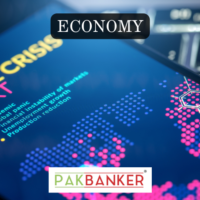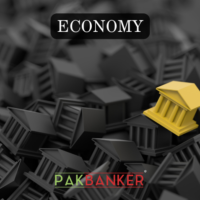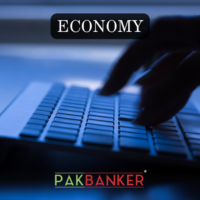

SBP Governor’s Annual Report Highlights Economic Stability, Flags Global and Domestic Risks
The SBP Governor’s Annual Report 2024–25 highlights improved economic stability, lower inflation, and a current account surplus for the first time in 14 years. It warns of global trade shifts, geopolitical tensions, and domestic risks, emphasizing the need for structural reforms and vigilant policymaking.

SBP expected to maintain policy rate at 11% as inflation increases post-floods and recovery begins
The State Bank of Pakistan (SBP) is expected to keep its policy rate unchanged at 11% in the upcoming MPC meeting, as inflation rises following recent floods and early signs of recovery appear in key sectors.

Pakistan’s Bank Deposits-to-GDP Ratio Drops to Lowest Level Among Peers: SBP
Pakistan’s deposits-to-GDP ratio has dropped to its lowest among peer economies despite record financial inclusion, according to SBP. Weak deposit growth, inflation, taxation, and religious factors are driving savers toward alternative assets, raising concerns about long-term investment financing and financial stability.

Debt Burden, Weak Productivity and Climate Risks Weigh Heavily on Pakistan’s Economic Outlook
The State Bank of Pakistan’s latest report highlights how debt, low savings, weak productivity, and climate shocks are undermining economic stability. With a fragile growth outlook, the central bank urges structural reforms, financial inclusion, and human capital development to sustain long-term economic resilience.

Pakistan’s Economy Stabilizes as Growth Rebounds to 3%: SBP
Pakistan’s economy regained stability in FY25 as inflation fell to an eight-year low, external accounts improved, and growth rebounded to 3%. SBP projects further growth in FY26 but warns of climate risks and emphasizes structural reforms to sustain economic momentum.

SBP Governor Jameel Ahmed Highlights Economic Reforms, Rising Stability and Microfinance Sector Revamp
SBP Governor Jameel Ahmed highlighted the impact of recent policy and regulatory measures that have improved macroeconomic stability, lowered inflation, and boosted foreign exchange reserves, alongside announcing major reforms for Pakistan’s microfinance sector.

IMF Lowers Pakistan GDP Growth Projection to 3.6% Against Government’s 4.2% Target
The IMF has projected Pakistan’s GDP growth for 2025-26 at 3.6%, below the government’s 4.2% target, citing evolving economic conditions and global uncertainties. The forecast does not yet reflect the impact of recent monsoon floods.

Pakistan Faces Prolonged Economic Stagnation as Growth Forecast Falls to 2.6%
Economists warn Pakistan faces a prolonged period of low growth as the World Bank projects only 2.6% growth for FY25-26, raising concerns over inflation, unemployment, and stalled investment.

Pakistan’s Domestic Debt Surges to Rs54 Trillion in August Amid Fiscal Pressures
Pakistan’s total government domestic debt and liabilities surged to Rs54.28 trillion in August 2025, reflecting an 11.57% year-on-year increase, according to new data from the State Bank of Pakistan (SBP). While long-term borrowing expanded sharply, short-term obligations declined, highlighting the government’s strategy to manage debt maturity risks amid tightening fiscal conditions.

Pakistan GDP Growth Forecast Revised Down Amid Floods And Agricultural Losses
Private analysts cut Pakistan’s FY26 GDP growth projections to as low as 2.75% following devastating floods, highlighting agricultural damage, inflationary pressures, and rising fiscal and current account deficits.


